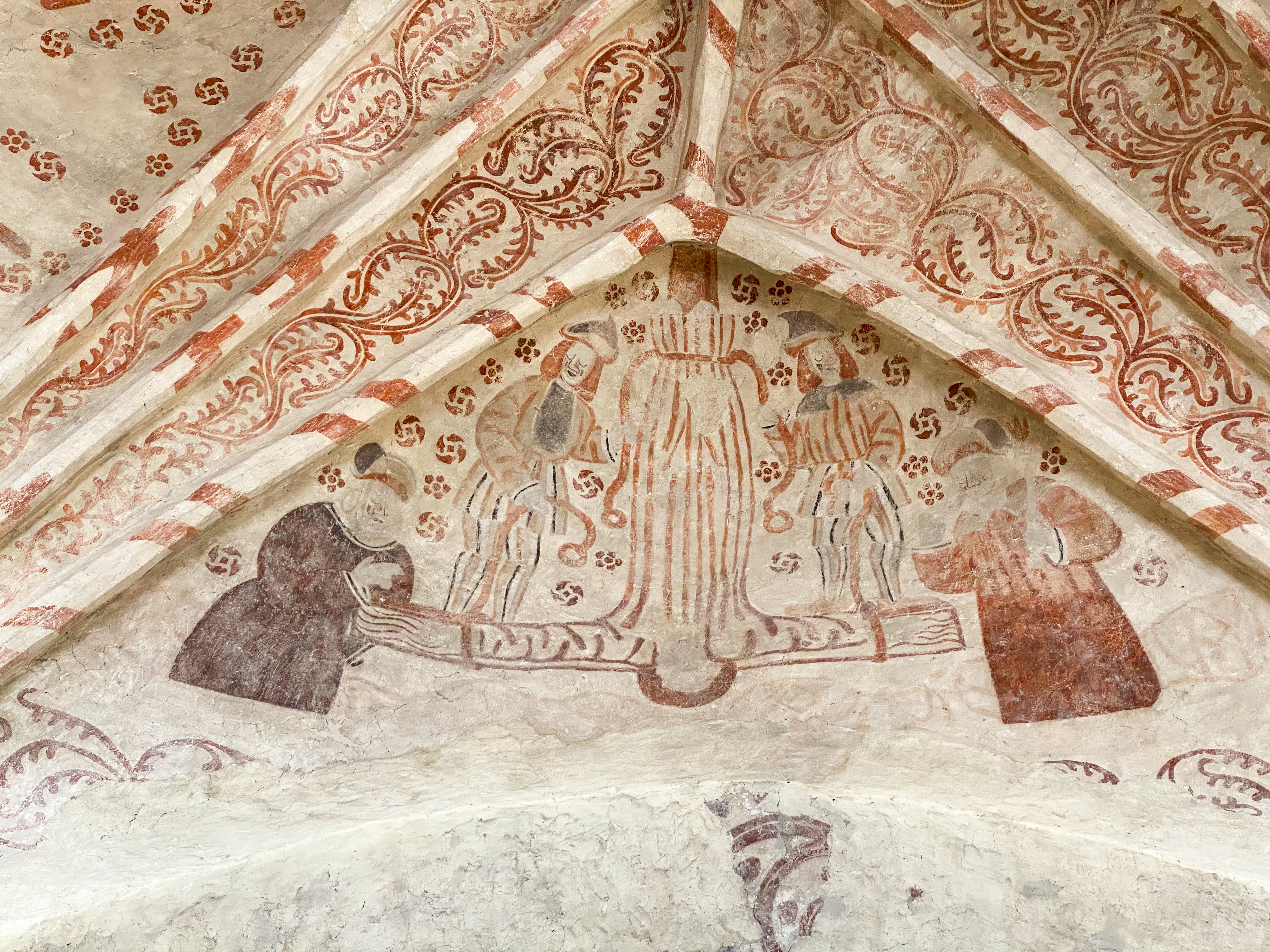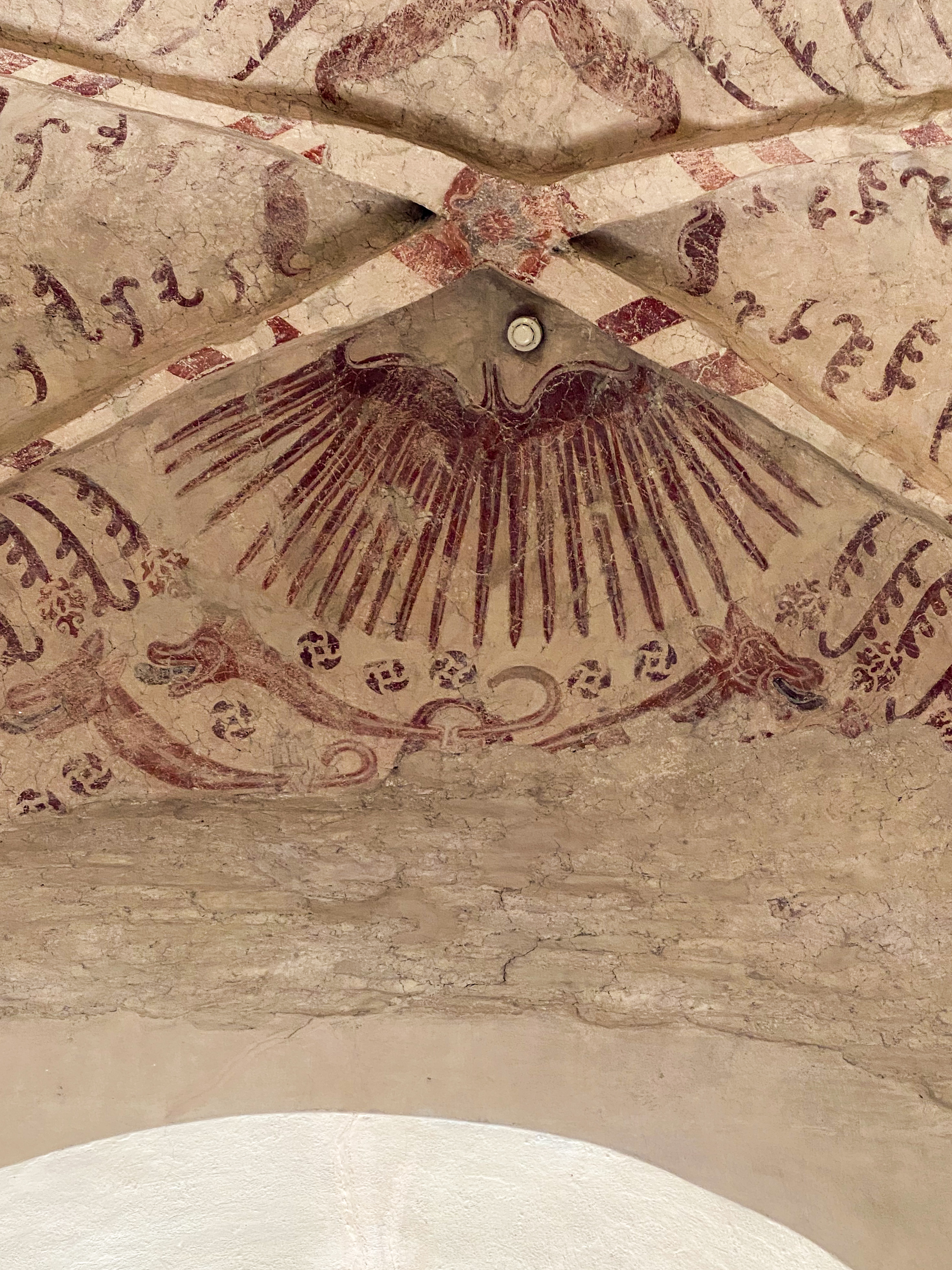Cookies
CookiesThe link opens in a new tab
On the walls and vaults of Siuntio St. Peter's Church, paintings from the biblical narratives, featuring saints, angels, and devils, were created during the 1400s and 1500s. The painters likely originated from northern Germany or the Baltic region.

Image: St. Peter crucified upside down.
The paintings in St. Peter's Church were executed in two stages. The oldest ones are the consecration crosses from the 1400s. Six consecration crosses have been preserved in the church. They were painted by the skilled church builders before the vaults were erected.
The later paintings were done by professional painters, probably in the 1510s. They resemble the paintings in Espoo Cathedral and Ingå Church. Therefore, it is assumed that the same group of painters worked on these three churches.
The paintings in Siuntio Church were not covered by overpainting during the Reformation but much later, during the era of Enlightenment, when the interior was painted with a light oil color.
In 1938, the parish decided to restore the old and valuable medieval paintings by removing the white overpaint. Unfortunately, it was then discovered that the old paintings had suffered severe damage, particularly when the wall surfaces were smoothed after the fire in 1823. The paintings had been largely destroyed, with the vault paintings being the best-preserved.
In 2009 the paintigs were restaured and cleaned again.
In the eastern part of the northern wall and in the vault above, there is a rare depiction: the heavenly coronation of the Virgin Mary.
In the southern part of the third vault, there is another rare image, a fragment of a man with the deadly sins – all seven deadly sins emerge in the form of serpents from the man's mouth.

Iamge: Fragmented painting depicting a man with seven deadly sins coming out of his mouth in the form of snakes.
CookiesThe link opens in a new tab